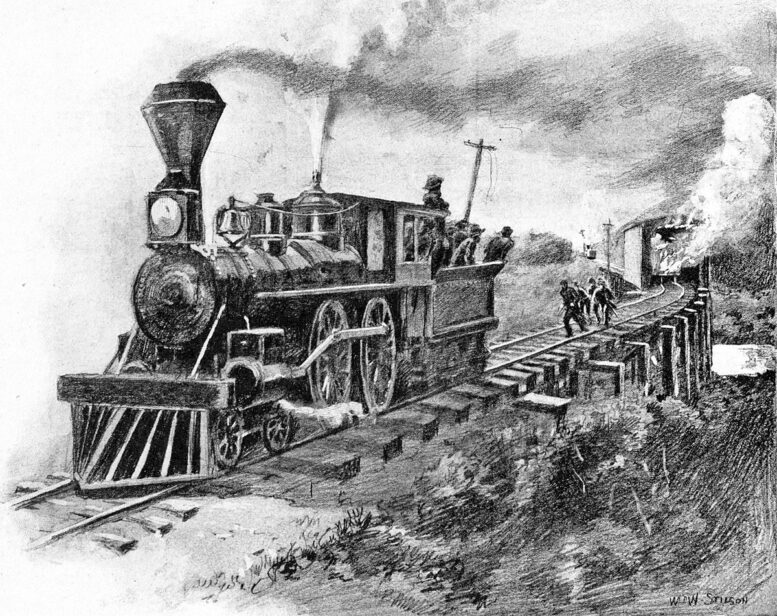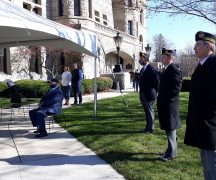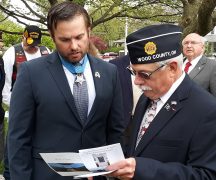By JAN McLAUGHLIN
BG Independent News
Two Civil War soldiers honored posthumously with Medals of Honor this week in the nation’s capital share a place in history with three Union soldiers buried in Wood County – all playing a role in what became known as the Great Locomotive Chase.
The men were part of the volunteer crew that crept 200 miles into Confederate territory, stole a locomotive, and destroyed railroad tracks and telegraph lines as they headed north.
On Wednesday, President Joe Biden awarded the Medal of Honor for conspicuous gallantry to U.S. Army Pvts. Philip G. Shadrach and George D. Wilson, who were captured by Confederates and executed by hanging.
The 22 soldiers, primarily from Ohio regiments, made up a crew called Andrews’ Raiders, named after James J. Andrews, a civilian spy and scout who devised the plan to hijack the train named “The General” outside Big Shanty, Georgia.
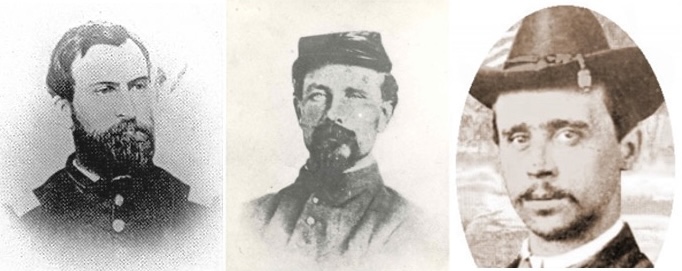
The three Andrews’ Raiders soldiers buried in Wood County – already recognized with Medals of Honor – are Elihu Harlam Mason in Pemberville Cemetery on Fish Road, Wilson Brown in New Belleville Ridge Cemetery in Dowling, and John Alfred Wilson in Union Hill Cemetery north of Bowling Green.
The Andrews Raid, on April 12, 1862, was a plan to disrupt the Western & Atlantic Railroad which ran from Chattanooga, Tennessee, to Atlanta, Georgia. The goal was to hijack a train and tear up tracks, destroy telegraph lines and burn bridges as the train traveled to Chattanooga.
The Raiders were pursued 87 miles and finally captured a few miles outside Chattanooga, after the locomotive ran out of fuel. All were put on trial, convicted, and shortly after, Andrews and seven of the Raiders were executed by hanging. The others were held as prisoners of war. Some were able to escape and headed northward.
The three Union soldiers buried in Wood County have specially marked graves, noting their roles in the Great Locomotive Chase.
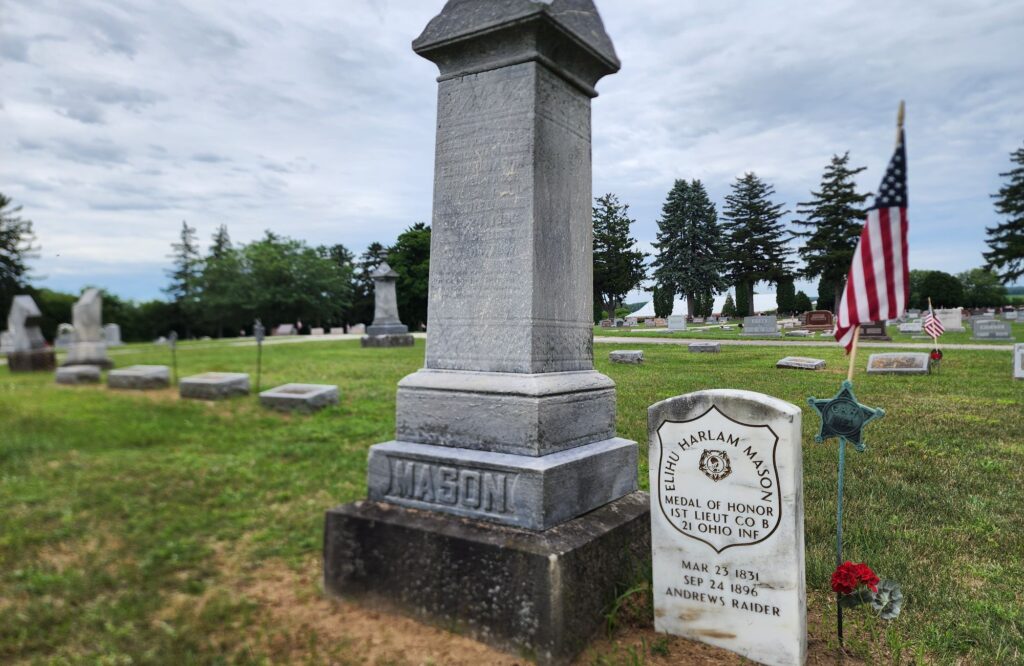
Mason joined the Union Army from Pemberville in April 1861, and by April 1862 was serving as a sergeant in the 21st Ohio Infantry. During that month, he volunteered for the raid into Confederate territory to disrupt rail transport in Georgia.
He was captured, but managed to escape from the Confederate prison on Oct. 16, 1862, with other members of Andrews’ Raiders. Very ill at the time, Mason was unable to keep up with the other soldiers and, at his own urging, was eventually left behind and recaptured by the Confederates.
Mason and five other recaptured raiders were released in a prisoner exchange the next year, on March 18. For his actions during the mission, he was awarded the newly created Medal of Honor one week after being exchanged, on March 25, 1863. He was the fourth person ever to receive the medal.
Mason later became a commissioned officer and reached the rank of captain. He fought in the Battle of Chickamauga where he was again captured by the Confederates. He was paroled in December 1864, and discharged in May 1865.
After the war, Mason returned to Pemberville, where he lived to the age of 65.
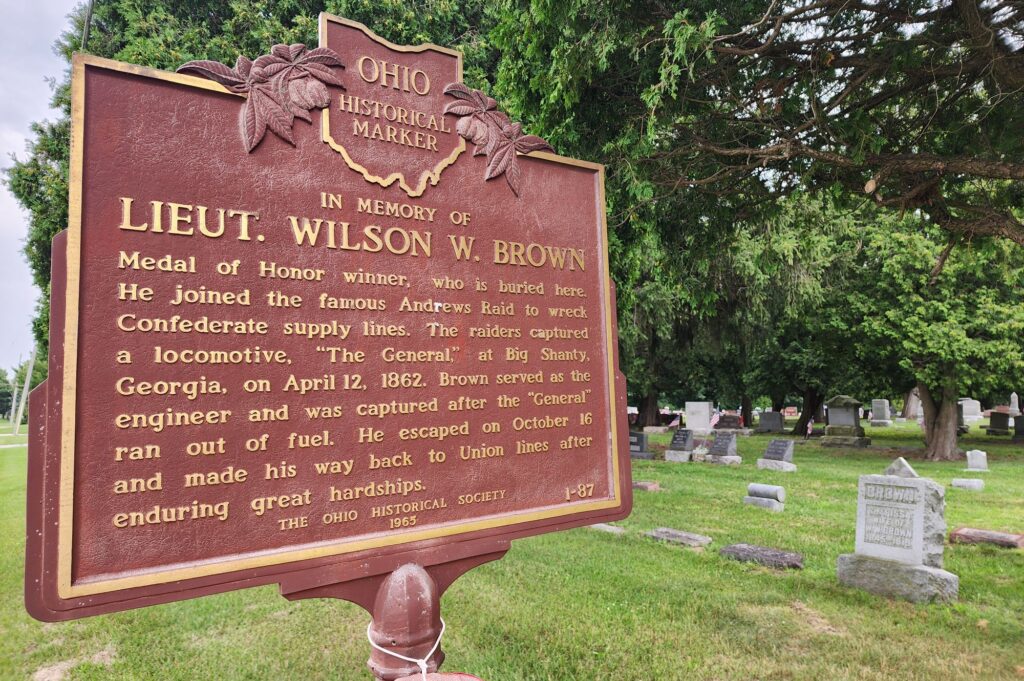
Brown, an engineer, was one of two soldiers in the Raiders who knew how to operate the locomotive. He was captured with the others, and later escaped on Oct. 16, 1862, and made his way back to Union lines “after enduring great hardships,” according to the historical marker where Brown is buried in Dowling.
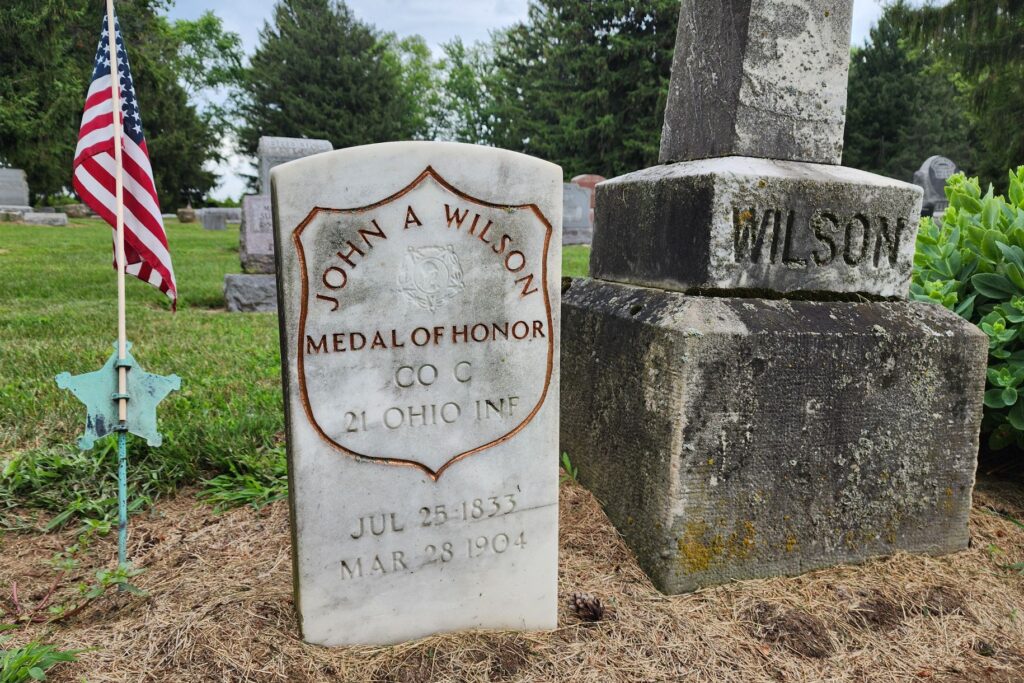
Wilson, buried in Union Hill Cemetery, was captured close to the Union lines in Stevenson, Alabama. Wilson and Mark Wood, who lived in Portage when he enlisted, escaped and after sailing down the Chattahoochee River, and being rescued by a Union ship. Wood was buried in Toledo.
Other soldiers from this area among Andrews’ Raider include William Bensinger and John Porter, both buried in McComb, and Robert Buffman, who listed his hometown as Gilead, Wood County.
According to a plaque at the Veterans Memorial Plaza on the grounds of the Wood County Courthouse, the sparsely populated Wood County (18,000 in 1860) furnished nearly 2,000 men for the Union military. Approximately 450 died in service.
Wood County soldiers served in 17 infantry regiments, two cavalry regiments, and two artillery batteries and participated in most major battles and campaigns. A few served in the Union Navy.
Six were awarded the Medal of Honor: Wilson W. Brown, Robert Buffman, Elihu H. Mason, Charles A. Thompson, John Alfred Wilson, and Mark Wood.
“Most local families had a member in the Union military, and their absence was a severe hardship for the farm-based community,” the plaque states. “Women, children, and the elderly struggled to maintain agricultural production in addition to providing other support for the Union’s cause. Most notably, each township organized a committee that recruited volunteers for the Union Army, supported soldiers’ families, and sponsored patriotic meetings.”
This plaque commemorates the efforts of Wood County’s soldiers, sailors, and civilians whose efforts helped preserve the United States as one nation.
The two Union soldiers recognized this past week for their role with Andrews’ Raiders were Pvt. George Wilson and Pvt. Philip Shadrach, who were tried and hanged by the Confederacy. Because of what historians attribute to an oversight, Wilson and Shadrach never received the awards. Descendants of the soldiers accepted the Medals of Honor.

